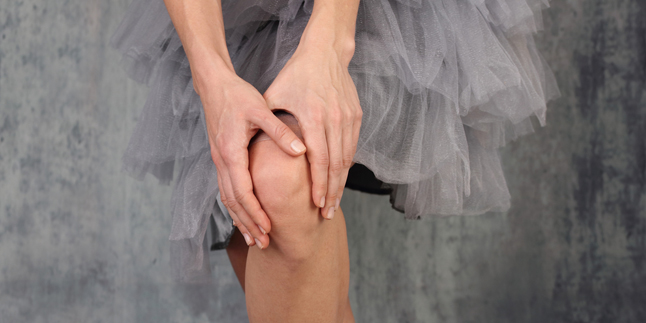Hamish Daud to Aurelie Moeremans Helps Disabled Workers Affected by Layoffs Through #SasaGotYourBack
You can directly fill in the data at sasagotyourback.com and experience the benefits of sharing.

Kapanlagi.com - Do you or elderly parents at home often complain of joint pain? Don't hesitate to see a doctor, as it could be a symptom of joint calcification! Joint calcification, or osteoarthritis, is a joint problem that is quite common in middle-aged and elderly people.
What causes this disease and how to overcome it? And is there a way to cure this disease? Here is an explanation from Nicolaas C. Budhiparama MD., PhD., SpOT (K), FICS and dr. Toto Suryo Efar, SpOT.
Youthful, Strong, and Flexible, Aging Joints No Longer the Same

Joint calcification is actually not a "disease," but a condition caused by natural aging. Similar to hair that gradually fades into gray, joints also slowly wear out and experience degeneration.
In youth, the body's joints are still strong and flexible, with good joint cartilage as a shock-breaker to protect the entire joint components. As time goes by, the joint cartilage becomes thinner and the joint cushion becomes worn out, causing the joint movements to become less smooth and painful. This process is called joint degeneration, or in medical terms, osteoarthritis.
Joint Degeneration, What Is It?

The term joint degeneration does not mean that the joints become calcified; this condition is different from bone thinning or osteoporosis. Joint degeneration most commonly affects large joints in the body, such as the knees, hips, and spine. Factors that contribute to joint degeneration include age, gender, weight, and history of injury.
As a person ages, they become more susceptible to joint degeneration. Women are generally more prone to experiencing joint degeneration than men. Excess weight is also an important factor because it puts a heavier load on the large joints over a long period of time, eventually causing them to wear out. In addition, a history of previous injuries can result in an imbalanced distribution of load in the joints, leading to early onset of calcification.
Strategies to Address Joint Calcification

If parents are currently in middle age or older and experience joint pain (especially in the knees, hips, and spine), it is advisable to consult a doctor. If joint calcification is diagnosed, there are many strategies to address this condition.
Pain caused by calcification can be treated with anti-inflammatory drugs. The pain can also be reduced by applying ice packs, physical exercises (stretching) especially to strengthen the muscles around the knees, injecting medication into the joints, and various physiotherapy modalities such as diathermy (microwave diathermy, MWD), taping, electrotherapy, or the use of orthoses. Difficulty walking can be overcome with walking aids such as a cane or walker.
Last Resort: Surgery

If calcification has reached a severe stage and all the above efforts have failed, patients with calcification can be helped with the last resort option, which is surgery. Surgery can generally involve arthroscopy (cleaning of the joint cushion using a mini telescope and camera inserted into the joint) if there are accompanying abnormalities such as bone cushion tears. However, if the aim is only to remove calcification, it will not provide relief. In advanced stages, arthroplasty (replacement of the damaged joint surface with an implant) can be performed. Both arthroscopy and arthroplasty are known to provide good results.
Do not ignore the signs of joint calcification, as the symptoms must be recognized early and treated carefully. Weight loss, activity modification, and adherence to therapy are the keys to the success of joint calcification.
(*)
This article is in collaboration with Nicolaas Budhiparama, MD., PhD., SpOT(K) from the Nicolaas Institute of Constructive Orthopedic Research & Education Foundation for Arthroplasty & Sports Medicine. www.dokternicolaas.com, instagram: @dokternicolaas
(kpl/zki)
Cobain For You Page (FYP) Yang kamu suka ada di sini,
lihat isinya
You can directly fill in the data at sasagotyourback.com and experience the benefits of sharing.
Let's take a look at the excitement!
Well, to satisfy your curiosity, here are the highlights of the excitement of the Merajut Sobat Ambyar concert.
Find out more by watching the live streaming event!
In addition to Afgan, there's also Marion Jola and ME VOICES.
Find out Pev's reliable tricks, KLovers!
This sensational road trip story was experienced by two winners of #DestinasiKicksPenuhSensasi together with Nissan Kicks e-POWER!
Don't miss out on the excitement of this event!
Don't run out of quota!
There are many confessions from the warriors of school from home that are scattered on social media. Which one is really related to you?
So, is it complicated to sell online while taking care of children? Don't worry, #SemuaDone from home. Here's how!
Want to imitate the 4 makeup looks that are widely applied by Korean celebrities, KLovers?